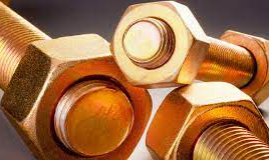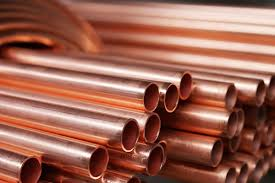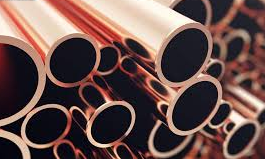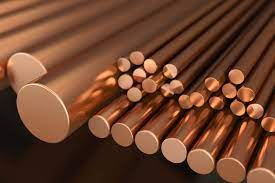Copper-nickel binary alloy (i.e., binary copper-nickel) is called average white copper. In common copper-nickel alloys, the letter B indicates the nickel content. For example, B5 suggests that the nickel material has to do with 5%, et cetera is the copper material.
Industrial copper-nickel alloy
Industrial copper-nickel alloys are separated right into architectural copper-nickel alloys and accuracy resistance alloy copper-nickel alloys (electric copper-nickel alloys).
1) Architectural white copper:
Architectural white copper is defined by excellent mechanical properties, rust resistance, and beautiful shade. One of the most generally made use of structural copper-nickel alloys are B30, B10 and zinc-nickel copper. Furthermore, there are aluminum-nickel copper, iron-nickel copper and niobium-nickel copper. B30 has the greatest rust resistance amongst copper-nickel alloys, but is extra pricey.
The performance of aluminum-nickel copper is similar to that of B30, and its rate is lower, so it can be used as a substitute for B30. Zinc-nickel copper started to be generated and used in China in the 15th century and was called “Chinese silver.” The supposed cupronickel or German silver likewise belongs to this sort of zinc cupronickel.
Zinc can be dissolved in copper and nickel in huge quantities, generating strong solution strengthening and corrosion resistance. After including lead, the zinc-nickel alloy can be smoothly reduced and processed into different precision parts, so it is extensively made use of in tools and medical devices. This alloy has high stamina, excellent corrosion resistance, good flexibility, stunning appearance and small cost.
Light weight aluminum in aluminum-nickel copper can dramatically improve the stamina and deterioration resistance of the alloy, and its precipitates can likewise produce age solidifying.
Structural copper-nickel alloys are widely used in the manufacture of accuracy machinery, chemical equipment and ship parts.

2) Copper-nickel alloy for accuracy resistance alloy (electrical copper-nickel alloy):
Copper-nickel alloys made use of in accuracy resistance alloys (electric cupronickel) have good thermoelectric buildings. BMn3-12 manganese copper, BMn40-1.5 constantan, BMn43-0.5 examination copper and new constantan with manganese as opposed to nickel (likewise called nickel-free manganese copper, consisting of 10.8-12.5% manganese, 2.5-4.5% aluminum, 1.0-1.6% iron) are all manganese copper nickel with different manganese material.
Manganese copper nickel is an accuracy resistance alloy. This alloy has high resistivity and reduced temperature level coefficient of resistivity, making it ideal for manufacturing conventional and precision resistive elements. It is utilized to produce precision electric instruments, variable resistors, meters, accuracy resistors, stress determines and various other products. Constantan and Coton have high thermoelectric possibilities and are additionally used as thermocouples and compensating cords.
The primary purpose
Among copper alloys, copper-nickel alloys are widely used in shipbuilding, petroleum, chemical sector, building and construction, electric power, accuracy tools, clinical devices, musical instruments and various other areas as a result of their exceptional corrosion resistance and simplicity of creating, processing and welding. Corrosion-resistant architectural parts. Particular copper-nickel alloys have special electrical residential properties that enable them to be utilized in the manufacture of repellent elements, thermocouple products and making up cables. Non-industrial copper-nickel alloys are mainly utilized to make attractive crafts.

Compare white copper and silver precious jewelry
Given that the color and quality of copper-nickel alloys resemble those of sterling silver jewelry, some unscrupulous sellers make use of customers’ lack of knowledge of silver precious jewelry and pass off copper-nickel jewelry as sterling silver jewelry to make substantial revenues.
So, how to identify sterling silver precious jewelry from copper-nickel fashion jewelry?
It is comprehended that general sterling silver precious jewelry will certainly be noted with S925, S990, XX sterling silver, etc, while copper-nickel precious jewelry does not have such markings or the markings are extremely vague; you can make use of a needle to scratch the surface of silver jewelry, while copper-nickel jewelry It is more challenging and not easy to scrape; the color of silver is a little yellowish-white, because silver is quickly oxidized and will certainly appear dark yellow after oxidation, while the shade of copper-nickel is pure white, and environment-friendly spots will show up after a time period.
Additionally, if a drop of concentrated hydrochloric acid is gone down on the within silver fashion jewelry, a silver chloride speed up comparable to white moss will promptly develop, while this will certainly not occur with copper-nickel alloys.
Main ranges
Common copper-nickel alloys mainly consist of 4 alloy grades: B0.6, B5, B19, and B30. The frequently used ones are B19 and B30, and there are a lot more brands in the American criterion.
Copper-nickel rod is a continual strong solution created by Cu and Ni and has a face-centered cubic latticework. The copper-nickel stage representation has a reasonably broad composition and temperature level variety in regards to metastable decomposition when the temperature is below 322 degrees Celsius. Adding 3rd elements such as Fe, Cr, Sn, Ti, Co, Si, and Al to Cu-Ni alloy can alter the structure, temperature level array and metastable decomposition position of the alloy, while also boosting some properties of the alloy.

Common copper-nickel alloys have good cold and hot processing buildings and can be smoothly processed right into different shapes such as plates, strips, pipelines, poles, profiles and cords. It has good welding performance and can be utilized for soft and difficult brazing, gas shielded arc welding and resistance welding. The reducing performance is 20% of that of cost-free cutting brass HPb63-3.
Common copper-nickel alloys have great rust resistance, tool stamina, high plasticity, can be refined under cold and hot stress, and have great electric conductivity. In addition to its use as a structural product, it is also a vital high resistance and thermocouple alloy.
These copper-nickel alloys’ vast array of applications have actually made them vital products in many sectors, and their exceptional properties have actually made them extensively used in design and manufacturing.
Supplier
TRUNNANO is a supplier of copper-nickel alloy plate with over 12 years experience in nano-building energy conservation and nanotechnology development. It accepts payment via Credit Card, T/T, West Union and Paypal. Trunnano will ship the goods to customers overseas through FedEx, DHL, by air, or by sea. If you are looking for high-quality copper-nickel alloy plate, please feel free to contact us and send an inquiry.
